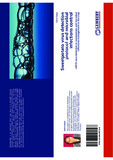| dc.description.abstract | Sweetpotato is an important food crop worldwide since it is drought tolerant and acts as a famine relief crop. However, its production is limited by viral, fungal and bacterial infections. Lack of rapid and sensitive techniques for detection of infections inhibits their control. Use of synthetic chemicals to manage microbial infections is not effective because apart from their potential danger to both humans and environment, they are unaffordable by most farmers. Moreover, because of pathogens resistance, most chemicals have become ineffective. In order to fully exploit the potential of the sweetpotato crop, there is a need to search for affordable, readily available, sustainable, and environmentally friendly means of managing the problems posed by these pathogens. Plants extracts have been reported to be safe, non-phytotoxic to humans, but effective against several plant pathogens. The aim of this study was to identify viruses infecting sweetpotato in western Kenya, develop a multiplex polymerase chain reaction (PCR) protocol for detection of major viruses of the crop, and evaluate efficacy of medicinal plant extracts for antimicrobial activity against the crop pathogens. Symptomatic sweetpotato vines from farmers’ fields were tested for ten viruses using NCM-ELISA. mPCR protocol for detection of Sweetpotato feathery monttle virus (SPFMV) and Sweetpotato chlorotic stunt virus (SPCSV) was optimized through variation of test parameters under standard PCR conditions. Extracts from Warburgia ugandensis, traditionally used to manage microbial infections, were tested for antimicrobial activity against sweetpotato infection pathogens using paper disk diffusion assay. Five viruses namely SPFMV, SPCSV, Sweetpotato mild mottle virus (SPMMV), Sweetpotato chlorotic fleck virus (SPCFV) and Cucumber mosaic virus (CMV) were detected. Eighty nine percent of samples had viral infection with over 80% showing multiple infections. Occurrence of CMV in Kenya was recorded for the first time. A rapid multiplex PCR protocol that simultaneously detects SPFMV and SPCSV was developed. The best amplification was obtained with 2.0 g of complementar cDNA template using the following parameters: one cycle at 95 ºC for 5 min followed by 35 cycles 96 ºC, 5 sec for denaturation; 63 ºC, 5 sec for primer annealing and 72 ºC, 30 sec for extension and a final extension at 72 ºC for 10 min. From the antimicrobial assay, ethyl acetate extract exhibited the highest (P! 0.05) antifungal and antibacterial activities compared to n-hexane and methanol extracts. Rhizopus stolonifer was more susceptible to ethyl acetate extract (inhibition zone = 24.5 mm) than Blitox which was used as a positive control. The minimum inhibitory concentration (MIC) for the isolates ranged between 12.5 to 200 µg/ml with the lowest MIC value of 12.5 µg/ml being observed with polygodial against Fusarium solani; warburganal against Aspergillus niger and F. solani; and mukaadial against Aspergillus niger. This study provided a quantitative assessment of viruses infecting sweetpotato in western Kenya and a simplified mPCR protocol for routine rapid detection of SPFMV and SPCSV. Scientific proof for the efficacy of extracts and isolates of W. ugandensis as antimicrobial agents against sweetpotato pathogens and perhaps other crop pathogens was also provided. | en_US |

